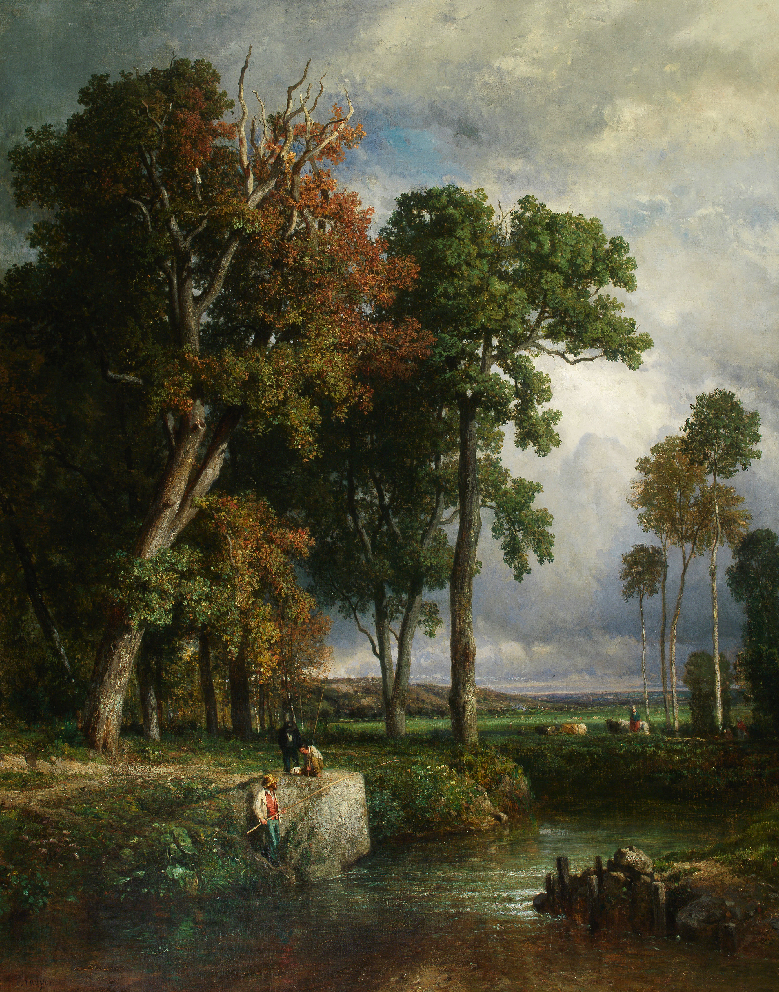
- France, c. 1850
- Oil on canvas
- Inv. 54
- Signed: C. Troyon
The Fishermen
Various stylistic currents coexisted in France throughout the 19th century, and this was necessarily reflected in the different forms of conceiving nature. From the 1850s is this magnificent work by Constant Troyon, in which a transition is announced between an inner formal discipline in the style of the Salon and the assimilation of an imported pictorial style from the Dutch Golden Age, particularly inspired by Albert Cuyp and Paulus Potter. This is visible in the background of the painting, in which a group of animals can be seen on a vast plain in the Normandy region, which extends to the lower horizon, defined by an immense cloud-covered sky.
The incorporation of aspects derived from the direct outdoor observation of nature, as verified in the section of the painting formed by a dense group of ancient oaks, reveal an identical concept of the landscape to that evident in the art of Théodore Rousseau or Narcisse Diaz de la Peña, main names from the Barbizon School with whom the artist at Fontainebleau. The painting, which is also close to Constable in terms of its general conception is an eloquent example of the reconciliation of two fundamental 19th-century tendencies, a point where Romantic and Naturalist presumptions clearly intermix.
Acquired by Calouste Gulbenkian through Graat et Madoulé, Georges Petit Gallery, Paris, 22 May 1924 (no. 43).
H. 161 cm; W. 130 cm
Sampaio 2009
Luísa Sampaio, Painting in the Calouste Gulbenkian Museum. Lisbon/Milan: Calouste Gulbenkian Museum/Skira, 2009, pp. 198-99, cat. 88.